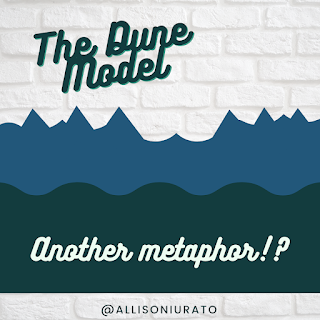The Dune Model- Another Metaphor!?
In 2014, Jürgen Bolten published "The Dune Model- or: How to Describe Cultures" which suggested a different way to describe intercultural communication, research and understanding. Bolten argued that previous models featured black-or-white approaches, e.g. describing a culture as collectivist or individualist. His proposal was to "zoom in and out" of cultures and individuals. Imagine that you are viewing "culture" through a camera lens. The further you zoomed out, you can see a greater area- yet you are unable to view fine details. The closer you zoom in, the more details you can see- yet, the image is "fuzzier" since it is interconnected.
This example of zooming in and out brought him to his model: the Dune.
In the layers of the dune, the top portion consists of fine, dry sand but underneath there are layers of firmer sediment.
Broken into three rule types, culture consists of:
"Have to rules" are based on norms, laws and other strict or innate features in a culture that are collective in nature. They are less prone to change unless there is a major disruption in the foundation or core.
"Should rules" refer to looser conventions in a culture's foundation. They feature things like rituals, traditions and other collective guidelines.
"Can rules" are what Bolten referred to as "fashionable" trends; meaning, they are short-term, highly individualistic and context-dependent. Just like a dune, the finer sand at the top will shift more easily and more quickly.
Bolten concluded that this model is "fuzzy" as many dunes will blend and connect through a vast and expansive world.
What are your thoughts on the Dune Model? Let me know in the comments!

Comments
Post a Comment